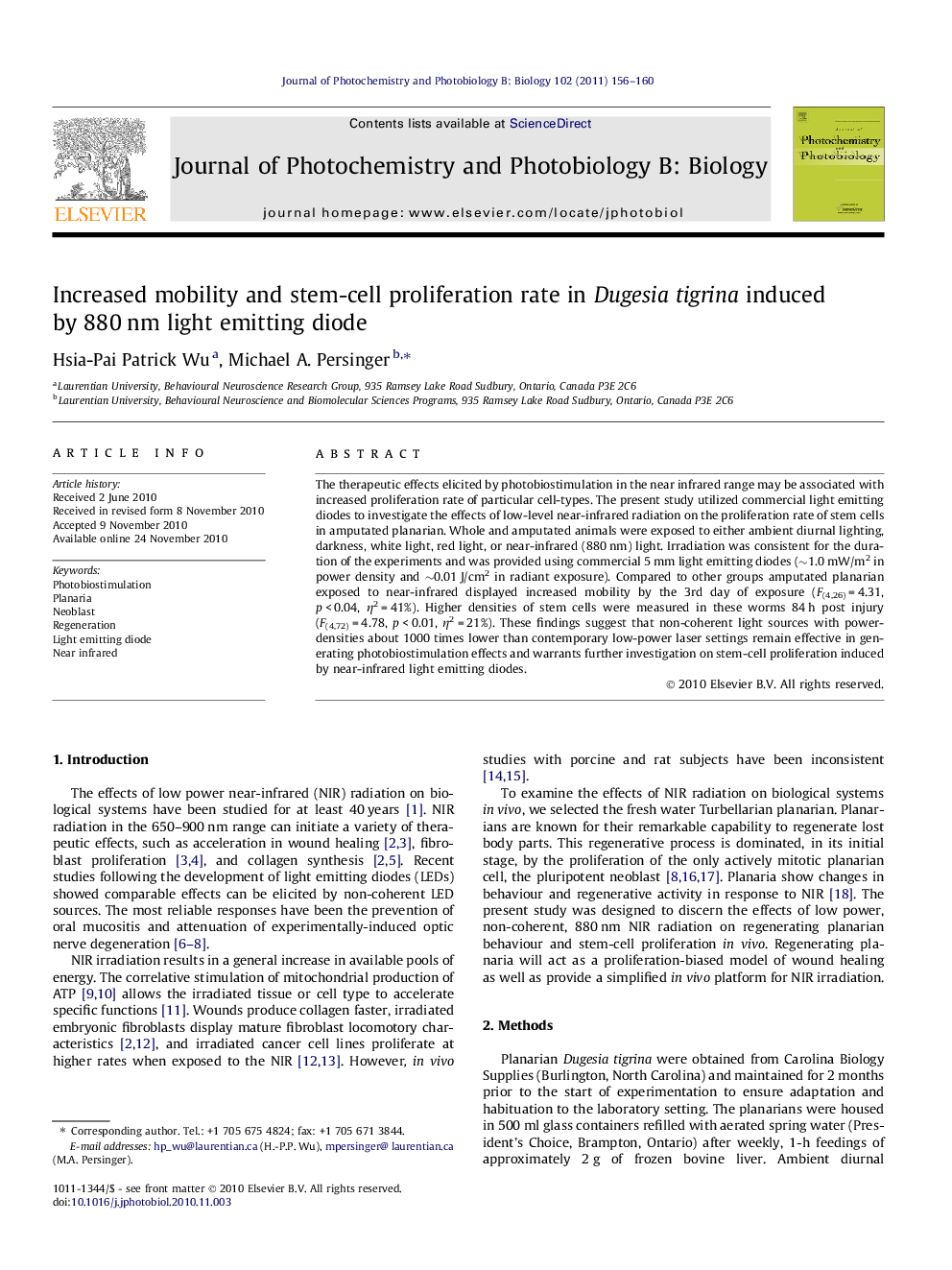| Article ID | Journal | Published Year | Pages | File Type |
|---|---|---|---|---|
| 30940 | Journal of Photochemistry and Photobiology B: Biology | 2011 | 5 Pages |
The therapeutic effects elicited by photobiostimulation in the near infrared range may be associated with increased proliferation rate of particular cell-types. The present study utilized commercial light emitting diodes to investigate the effects of low-level near-infrared radiation on the proliferation rate of stem cells in amputated planarian. Whole and amputated animals were exposed to either ambient diurnal lighting, darkness, white light, red light, or near-infrared (880 nm) light. Irradiation was consistent for the duration of the experiments and was provided using commercial 5 mm light emitting diodes (∼1.0 mW/m2 in power density and ∼0.01 J/cm2 in radiant exposure). Compared to other groups amputated planarian exposed to near-infrared displayed increased mobility by the 3rd day of exposure (F(4,26) = 4.31, p < 0.04, η2 = 41%). Higher densities of stem cells were measured in these worms 84 h post injury (F(4,72) = 4.78, p < 0.01, η2 = 21%). These findings suggest that non-coherent light sources with power-densities about 1000 times lower than contemporary low-power laser settings remain effective in generating photobiostimulation effects and warrants further investigation on stem-cell proliferation induced by near-infrared light emitting diodes.
